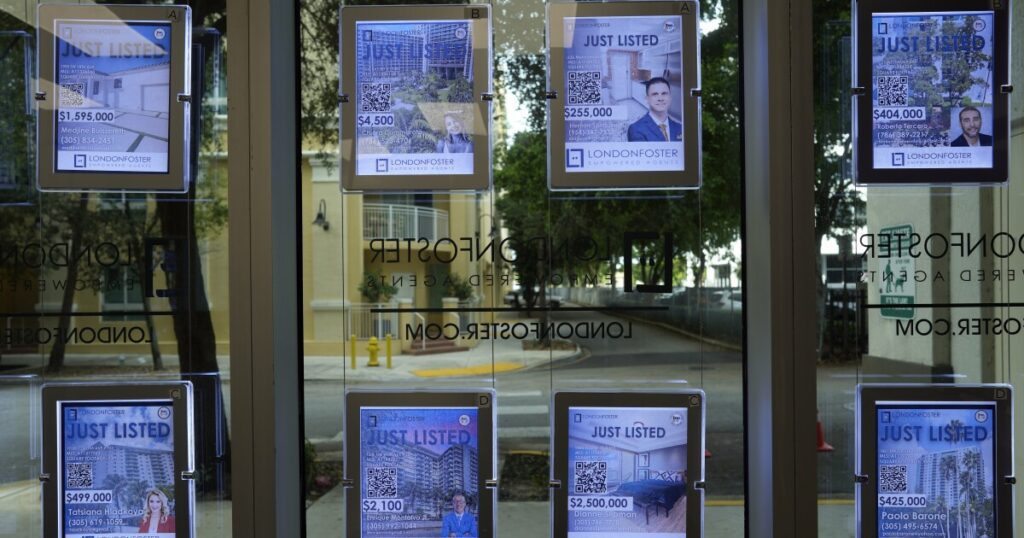South Florida Condo Sales Plummet Amid Market Reforms and Economic Uncertainty
The South Florida real estate market is witnessing a stark decline in condominium sales, particularly in April, as buyers grow cautious amid regulatory changes and economic challenges. While median condo prices have remained stable, buoyed by newer and more expensive units, the overall sales volume has seen a sharp contraction.
Sharp Decline in Condo Sales Across South Florida
In April, condo sales experienced a significant double-digit drop, marking a continuing trend over the past year. The Miami Association of Realtors reported a decline in the number of existing single-family homes sold as well, although home prices have been more resilient compared to the volatile condo market.
Causes Behind the Condo Market Slowdown
Several factors contribute to this slowdown:
- Post-Surfside Reforms Impact: Following the tragic collapse of the Champlain Towers South condo in Surfside, new laws now require older condo buildings to undergo mandatory structural integrity inspections and implement ongoing maintenance funding plans — including higher monthly fees and special assessments.
- Economic Uncertainty: Volatile tariff policies and sustained higher interest rates have shaken consumer confidence.
- Financing Limitations: Only a handful of condo buildings qualify for FHA-backed loans, which offer lower down payments and competitive mortgage rates, making financing difficult for many buyers.
"I think we are beginning to see the real pain in the condo market right now," said Juan Arias, Director of Market Analytics at Homes.com.
Market Polarization: Luxury and Affordable Segments Lead
The South Florida condo market is highly polarized:
- Affordable Tier Growth: Condos priced between $150,000 and $250,000 saw increased sales in Miami-Dade County.
- Luxury Market Activity: High-end condos, especially those priced above $1 million, continue to attract cash buyers, particularly new developments that cater to affluent segments.
- Declining Middle Market: Sales in most other price ranges, including mid-tier units, have fallen sharply.
Challenges for Local Residents
With median household incomes around $80,000, many local buyers prefer older, vintage condos, which are bearing the brunt of increased fees and financing hurdles. This segment faces significant obstacles in affordability and access.
Impact of Surfside Tragedy Reforms on Older Condominiums
Following the Surfside disaster that claimed 98 lives, Florida implemented strict reforms aimed at enhancing condominium safety:
- Mandatory Structural Inspections: Older buildings must allow professional inspections to assess structural soundness.
- Increased Reserve Funds: Associations are required to save adequately for essential maintenance, including roofing, plumbing, and electrical systems.
- Additional Financing Options: Recent legislative measures passed by the Florida Legislature aim to provide associations with financing flexibility and extend compliance deadlines.
These changes have understandably created unease among potential buyers, leading to increased condo inventory despite falling sales.
"The number of condos listed for sale continues to rise, even as buyer interest shrinks," notes Miami Realtors Chief Economist Gay Cororaton.
Single-Family Home Market Versus Condo Market: A Divergent Path
While the condo market is trending as a buyer’s market due to excess inventory and reduced demand, the single-family home sector is showcasing more resilience:
- Median home prices have steadily increased year-over-year across Miami-Dade, Broward, and Palm Beach counties.
- Inventory for single-family homes remains tighter, supporting seller-favorable conditions.
- Approximately one-third of homes on the market in April were priced at $1 million or more, underscoring persistent demand in the luxury home segment.
“If you are lucky enough to find an attractive single-family home below $1 million, well good for you,” shared Juan Arias, highlighting affordability challenges.
The disparity between skyrocketing home prices and stagnant wages suggests that many residents are choosing to rent longer, exacerbating affordability issues.
Key Market Statistics and Trends
- Condo Inventory: Increased across all three counties but remains below pre-pandemic levels.
- Median Condo Prices: Largely flat, supported by sales of newer, luxury units.
- Median Home Prices: Consistently rising, signaling robust demand for single-family homes.
- FHA-Approved Condo Buildings: Fewer than two dozen receive Federal Housing Administration financing eligibility, limiting low-down-payment options.
Looking Ahead: Market Outlook and Consumer Advice
What Buyers and Sellers Should Know
- Condo buyers face ongoing challenges due to new regulations and financing restrictions. Investigate whether a building qualifies for FHA loans before committing.
- Sellers in the condo market may experience longer listing times due to buyer hesitancy.
- Single-family home sellers might benefit from strong demand but should be aware of affordability limits for many buyers.
- Renters should prepare for rising rents or explore alternative housing options amid growing demand from buyers sidelined by price and financing issues.
Conclusion: A Market Divided by Wealth and Regulatory Impact
The South Florida housing market exhibits a clear divide: luxury and affordable condos maintain some momentum, while the broader middle-tier condo segment contracts under mounting regulatory and economic pressures. Meanwhile, single-family homes continue to appreciate, contributing to a more polarized real estate landscape.
For detailed insights and trends in South Florida real estate, visit the Miami Association of Realtors and explore the latest market data to stay informed.
Related Articles:
- Understanding condominium inspection requirements in Florida
- How rising interest rates affect homebuyers
Stay updated on South Florida real estate news for the latest market shifts impacting buyers and sellers alike!


